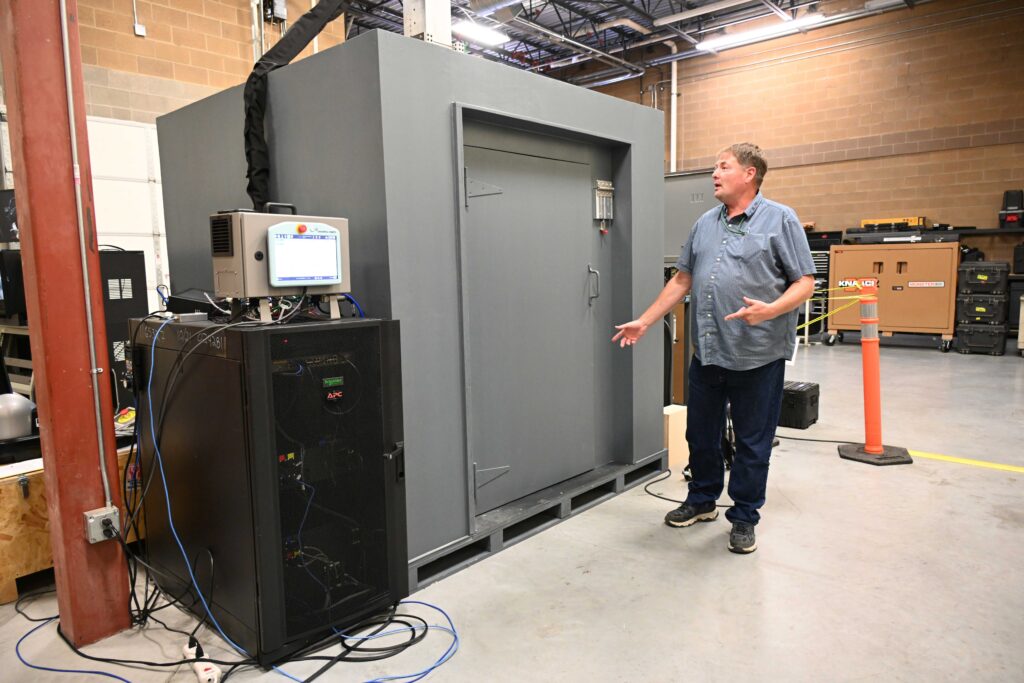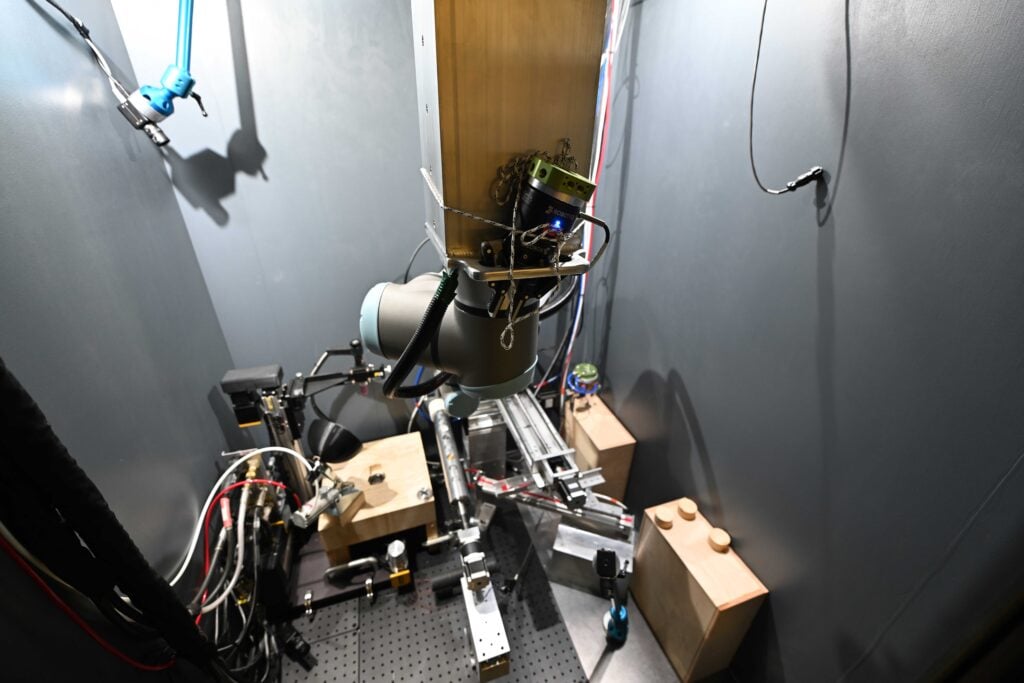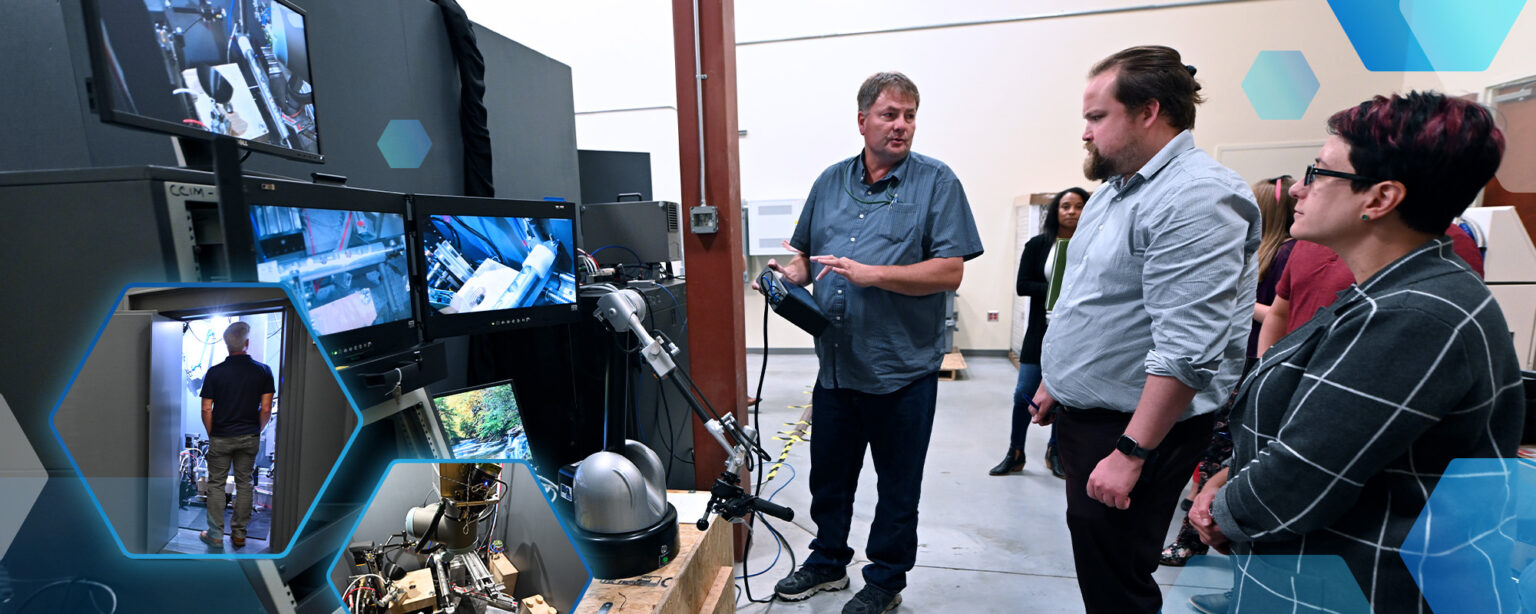People often think of radiation as the basis for carbon-free nuclear power. But radiation can also save lives. That’s especially true in hospitals where professionals use nuclear medicine to make diagnoses, treat medical conditions and sterilize equipment.
One such medical treatment includes radioisotopes in irradiators used to treat donated blood to prevent graft-versus-host disease. The disease is caused by complicated interactions between donor immune cells and host tissues. The condition can cause complications in patients already suffering from weakened immunity making the success of a life-saving transplant less likely.
Preventing graft-versus-host disease requires treating donated blood through blood irradiators, which expose blood to radiation to deactivate problematic cells. Cesium-137, a radioactive isotope of cesium, releases radiation at an energy that deactivates T lymphocytes, a certain white blood cell that’s a common culprit in the onset of graft-versus-host disease.
 |
 |
| The mobile hot cell | |
Alternatives to cesium-137
Despite their many useful applications, inherent risk still exists with the use of radioactive materials such as cesium-137. These materials also could be used in a radiological dispersal device, or “dirty bomb.” Fortunately, technology has progressed, and alternatives now exist that can irradiate blood to achieve the same results without the need for cesium-137. As the medical community works to replace blood irradiators with non-radioactive alternatives, they need a team with a unique skill set.
The Department of Energy/National Nuclear Security Administration’s (DOE/NNSA) Office of Radiological Security (ORS) works with national laboratories to provide assistance to owners of cesium-based blood irradiators as they make the transition to non-radioactive alternatives, such as X-ray irradiators. Through its Cesium Irradiator Replacement Project, ORS works with national laboratories such as Idaho National Laboratory (INL) to help sites make the switch away from cesium by providing an incentive for the new device and recovering the old device at no cost.
“ORS started the Cesium Irradiator Replacement Project, or CIRP, in 2014 to permanently reduce risk by replacing cesium-based irradiators with nonradioactive technology,” said Kevin Kenney, a source recovery team member. “The National Defense Authorization Act of 2019 put additional support behind CIRP and established a goal to replace all cesium blood irradiators by the end of 2027 through a voluntary program.”
Importance of safe recovery
When the radioactive material in blood irradiators is depleted beyond its useful level or the device is no longer needed, that device must be safely recovered.
INL and Los Alamos National Laboratory (LANL) make up the Offsite Source Recovery Program (OSRP) team, with the expertise to safely recover radioactive source material. The team is funded by DOE/NNSA and collaborates closely with ORS, other national laboratories, local authorities and private businesses to safely recover disused radioactive material around the country.
OSRP is a critical part of ORS’s goal to replace all remaining cesium blood irradiators in the United States by the end of 2027. Careful planning is required between OSRP and other stakeholders working on CIRP to ensure that the old devices are removed safely and in time for replacement devices to be installed.
Improving recovery tracking
To achieve CIRP’s goals, the OSRP team, other national laboratories, and staff at ORS must adequately track progress toward removing and replacing all cesium blood irradiators. The current tracking system provides high level information that requires time intensive processing to provide the granular data and statistics users are looking for.
Recently, INL geospatial researchers developed a web-based spatial dashboard to track CIRP’s progress toward recovering and removing all cesium blood irradiators in the United States.
“We’re working to develop a web-based spatial dashboard that can provide real-time statistics to show our progress toward removing all cesium blood irradiators and when we’ve removed them,” said Cleve Davis, another team member. “This dashboard will plot our status toward total recovery as a percentage and showcase how many new irradiators have been recovered at any point in time.”
“Integrating spatial data and layers into our dashboard offers a fuller picture of recovery efforts through dynamic, location-based analytics,” said team member Rohit Mendadhala. “This not only tracks our progress towards total recovery, but also reveals hidden patterns and trends for more informed decisions and improved results.”
The dashboard will also allow users to sort the information based on different attributes, like completion of certain milestones or schedules for recovery, so they can access all data related to the source recovery efforts. This will allow all the team members to find the information quickly and easily they need to complete their part of the mission.
A work in progress
The dashboard development team has overcome many challenges to make this first iteration possible. As the developers, Davis and Mendadhala are exploring key critical areas to ensure that all the correct data points are included. These areas include data science/statistics, computer science, cybersecurity, human-computer interaction, and geographic information systems. They also must build proper protections into the system for all sensitive unclassified data.
Now that the INL team has developed the first version of the dashboard, which now has a prototype test scheduled with ORS staff, it will expand and refine the tool in the months and years to come.
“This first dashboard just highlights the capabilities of these kinds of displays,” Davis said. “We will continue updating it to ensure that it reflects the needs of our customers and the CIRP program at large, fulfilling our mission of recovering all cesium blood irradiators in the nation.”





